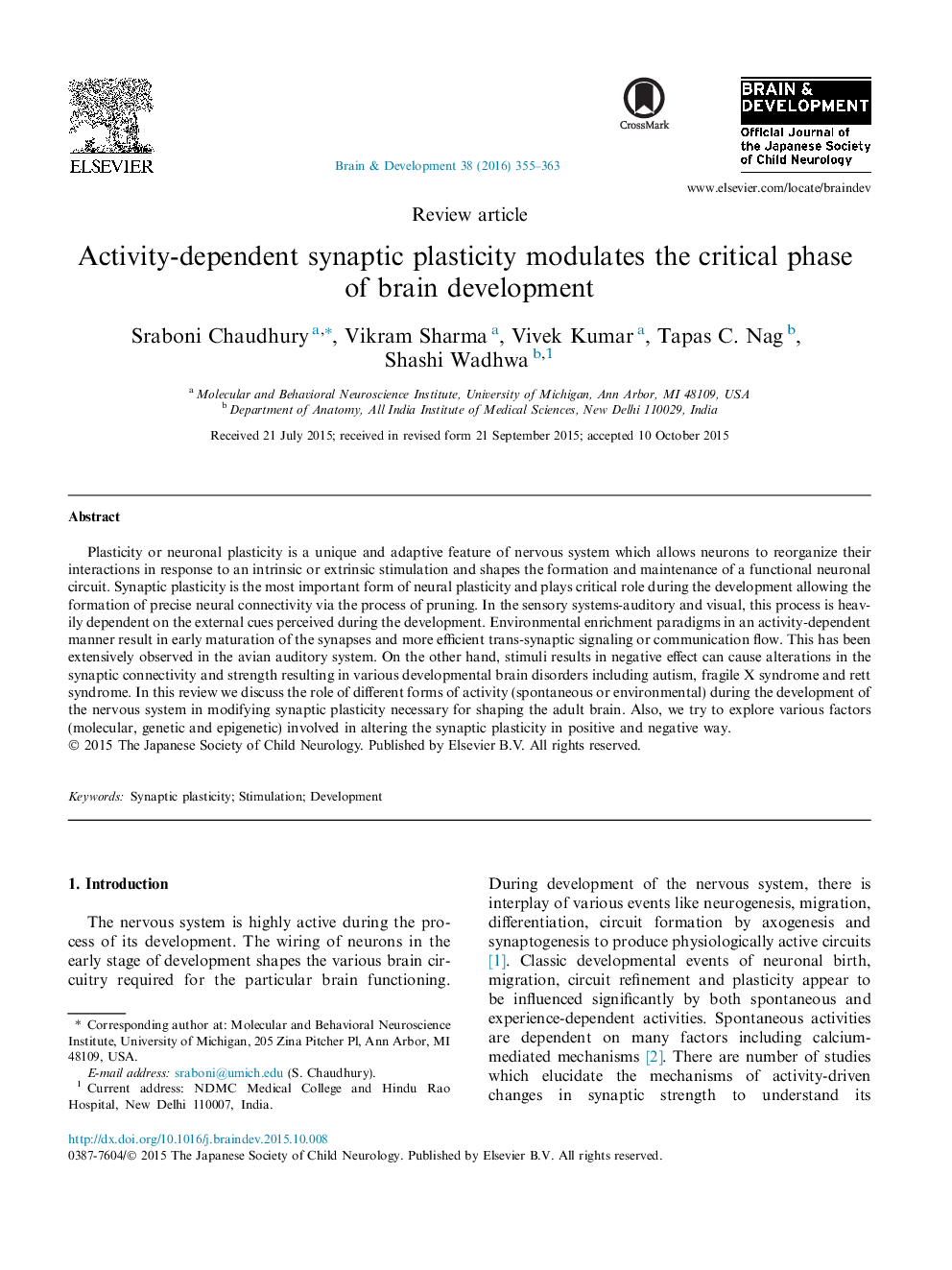| Article ID | Journal | Published Year | Pages | File Type |
|---|---|---|---|---|
| 3036510 | Brain and Development | 2016 | 9 Pages |
Plasticity or neuronal plasticity is a unique and adaptive feature of nervous system which allows neurons to reorganize their interactions in response to an intrinsic or extrinsic stimulation and shapes the formation and maintenance of a functional neuronal circuit. Synaptic plasticity is the most important form of neural plasticity and plays critical role during the development allowing the formation of precise neural connectivity via the process of pruning. In the sensory systems-auditory and visual, this process is heavily dependent on the external cues perceived during the development. Environmental enrichment paradigms in an activity-dependent manner result in early maturation of the synapses and more efficient trans-synaptic signaling or communication flow. This has been extensively observed in the avian auditory system. On the other hand, stimuli results in negative effect can cause alterations in the synaptic connectivity and strength resulting in various developmental brain disorders including autism, fragile X syndrome and rett syndrome. In this review we discuss the role of different forms of activity (spontaneous or environmental) during the development of the nervous system in modifying synaptic plasticity necessary for shaping the adult brain. Also, we try to explore various factors (molecular, genetic and epigenetic) involved in altering the synaptic plasticity in positive and negative way.
